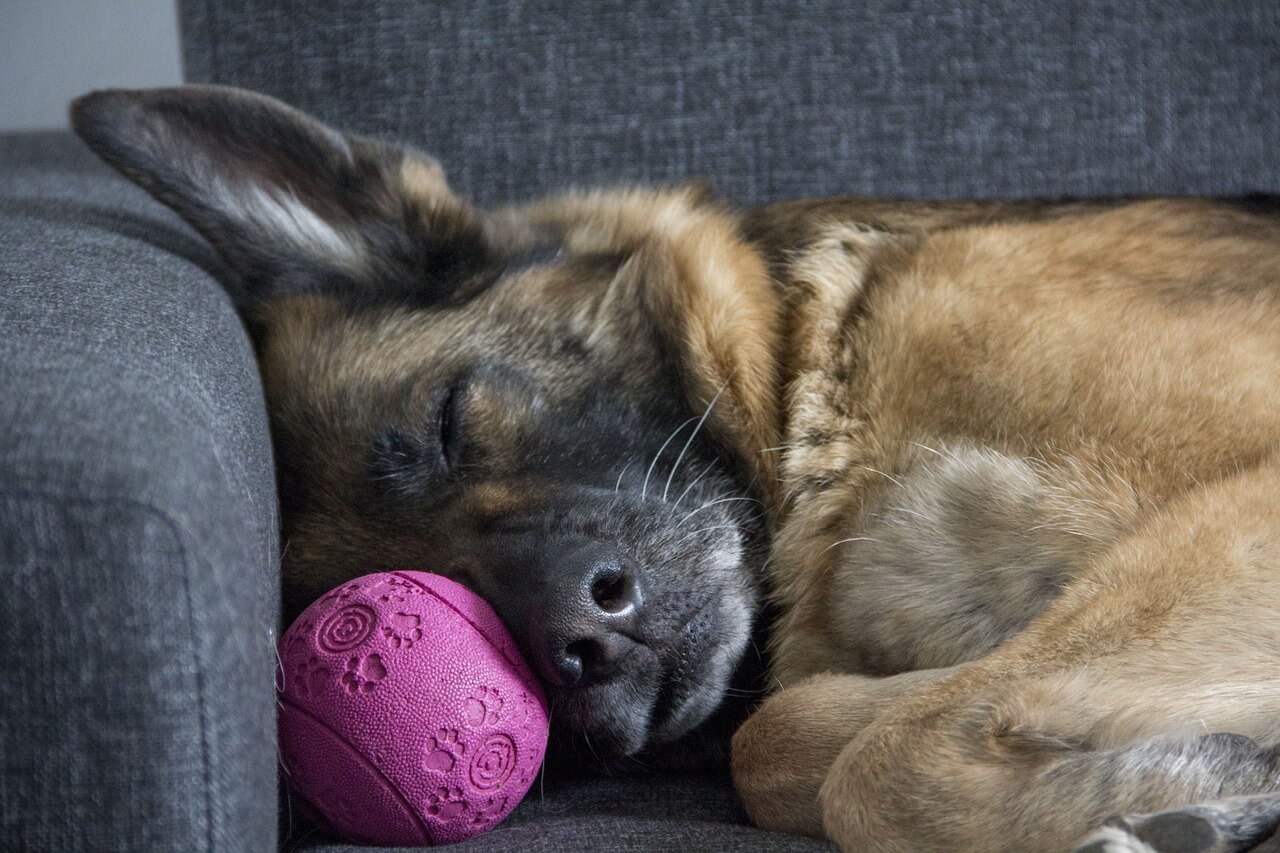As a pet lover and seasoned expert in the world of our four-legged companions, I frequently encounter questions that, at first glance, may seem puzzling. One such question often asked by pet parents is: why do female dogs hump? This behavior can leave dog owners confused, unsure whether to be concerned or amused.
It’s important to note that humping behavior is not exclusive to male dogs. Female dogs hump as well, and it’s more common than you might think. While it's easy to jump to conclusions about why this happens, the reasons behind female dog humping are multi-faceted and intriguing.
Understanding Dog Behavior
Before we dive into the specifics of why female dogs hump, it’s crucial to have a bit of background on dog behavior in general. Dogs, like their wild ancestors, communicate and interact with the world around them in ways that are often misunderstood by us humans. The way they behave, from wagging their tail to playfully growling is like a language that tells us a lot, about how they feel and what's going on with them physically.
Humping, or mounting, is one such behavior that is often misinterpreted. While it's easy to associate it solely with mating or dominance, the reality is far more nuanced. This behavior may manifest as a way to have fun cope with stress, showcase social standing or as a reaction, to feeling excited. For female dogs, especially, humping is not always related to their sexual instincts.
Debunking Myths
One of the biggest misconceptions surrounding female dogs and humping is the idea that it's all about asserting dominance. While dominance can play a role in why dogs hump, it’s certainly not the whole story, especially for females. To gain an understanding of their behavior it is necessary to go beyond the notion of dominance and take into account other influencing factors.
- Play Behavior: Sometimes, humping is just a dog being a dog. Puppies and young dogs often hump each other during play, regardless of their gender. It’s a way for them to explore their environment and interact with their peers. For female dogs, engaging in this behavior during playtime is normal and should not be a cause for concern.
- Social Interaction: Dogs are social animals, and they use a variety of behaviors to interact with each other. Mounting can serve as a means for a canine to navigate the dynamics, within a group and discovering her position, among her fellow companions.
- Excitement or Stress Relief: Just like humans, dogs have their own ways of expressing excitement or relieving stress. A female dog might hump an object, another dog, or even a human leg when she’s over-excited or feeling stressed.
- Medical Reasons: In some cases, humping can indicate a medical issue. If a female dog suddenly starts humping excessively, it could be a sign of a urinary tract infection, skin allergy, or other medical concerns. If you observe any excessive changes, in your pet's behavior it is always recommended to seek advice, from a veterinarian.
Why Do Female Dogs Hump?
There are several reasons female dogs might display humping behavior, and understanding these can help pet owners address it properly.
Play Behavior
Female dogs may hump during playtime with other dogs, especially when they are puppies or young. This behavior is often a way for dogs to explore their surroundings and interact with peers. Many dogs, both male and female, hump during play simply because they are excited, not because of any sexual motivation. Providing your dog with a dog chew toy during playtime can help redirect her energy and reduce humping behavior by keeping her engaged with a more appropriate activity.
Social Interaction
Dogs are social animals, and they use a variety of behaviors to communicate. Mounting behavior may help female dogs navigate the social hierarchy within their pack. It’s one way dogs explore their standing in relation to other dogs. Offering a dog chew toy can also serve as a distraction during social interactions, helping to prevent unwanted humping.
Plush Lamb Squeaker Toy Dog Interactive Toy

€5,95
€8,95
Treat your friend to fun and coziness, with our Cute Sheep Squeaker Plush Toy. Suitable for dogs of any size this charming and huggable toy is crafted to entertain, engage and offer solace to your pet. Adorable Sheep: Carefully designed… read more
Excitement or Stress Relief
Just like humans, dogs experience emotions like excitement, anxiety, or stress. When a female dog is overly excited or stressed, she may start humping objects, other dogs, or even people. This is a way for her to release pent-up energy or cope with anxiety. In such cases, providing a dog chew toy can be an effective way to help your dog relieve stress without resorting to humping behavior.
Medical Reasons
Humping can sometimes be a sign of an underlying medical issue. If a female dog starts humping excessively, it could indicate a condition such as a urinary tract infection, skin allergies, or other medical problems. In these cases, it’s essential to consult a veterinarian to rule out any serious health concerns. While waiting for a diagnosis, offering your dog a dog chew toy can keep her occupied and minimize the humping.
Cute Duck Plush Toy With Squeaker Dog Chew Toy

€6,95
€10,95
Give your friend joy with our Cute Duck Plush Toy With Squeaker. This delightful dog chew toy is designed to entertain and captivate dogs of all sizes. Charming Duck Design: The plush toys cute duck design is sure to charm… read more
Managing Female Dog Humping Behavior
While humping can be normal, there are instances where you might want to discourage humping, especially if it becomes compulsive or disruptive. Here are some top tips to manage your dog's behavior:
Identify the Triggers
The first step in managing humping behavior is to understand what triggers it. Is your dog reacting to stress, excitement, or the presence of new animals or other pets? Understanding the triggers will help you address the root cause of the behavior.
Positive Reinforcement Training
Training your dog to stop humping on command is a practical solution. Use positive reinforcement by rewarding her with treats or praise when she stops humping. Consistency is crucial—make sure to reinforce the behavior you want to see regularly.
Redirect the Behavior
When you notice your dog preparing to hump, distract her by engaging her in an appropriate activity, such as playing with toys or performing a trick. This helps channel her excitement or stress into healthier outlets, reducing the likelihood of compulsive behavior.
Spaying Your Dog
If your female dog isn’t already spayed, consider this option. Spaying can help reduce sexually motivated behaviors, including humping. It may also provide health benefits, such as lowering the risk of certain medical issues.
Seek Professional Help
If humping becomes excessive or you’re unable to manage it with basic training, consider consulting a professional or behaviorist. They can provide tailored advice to address your dog’s unique needs.
When to See a Veterinarian
If your dog suddenly begins humping more frequently, it’s important to rule out any potential medical issues. Conditions like urinary tract infections, skin allergies, or hormonal imbalances could be contributing factors. A quick visit to the vet will help ensure that your dog's behavior isn't a sign of something more serious.
Conclusion
Understanding why female dogs hump can help you better manage the behavior. Whether it’s caused by play, social interaction, stress, or medical problems, knowing the reason behind the action allows you to respond with empathy and patience. Remember, humping is a normal behavior for many dogs, but if it becomes a problem, there are plenty of ways to address it.
By staying informed and proactive, you can ensure that your dog remains healthy and happy, while also strengthening the bond between you and your furry friend.







